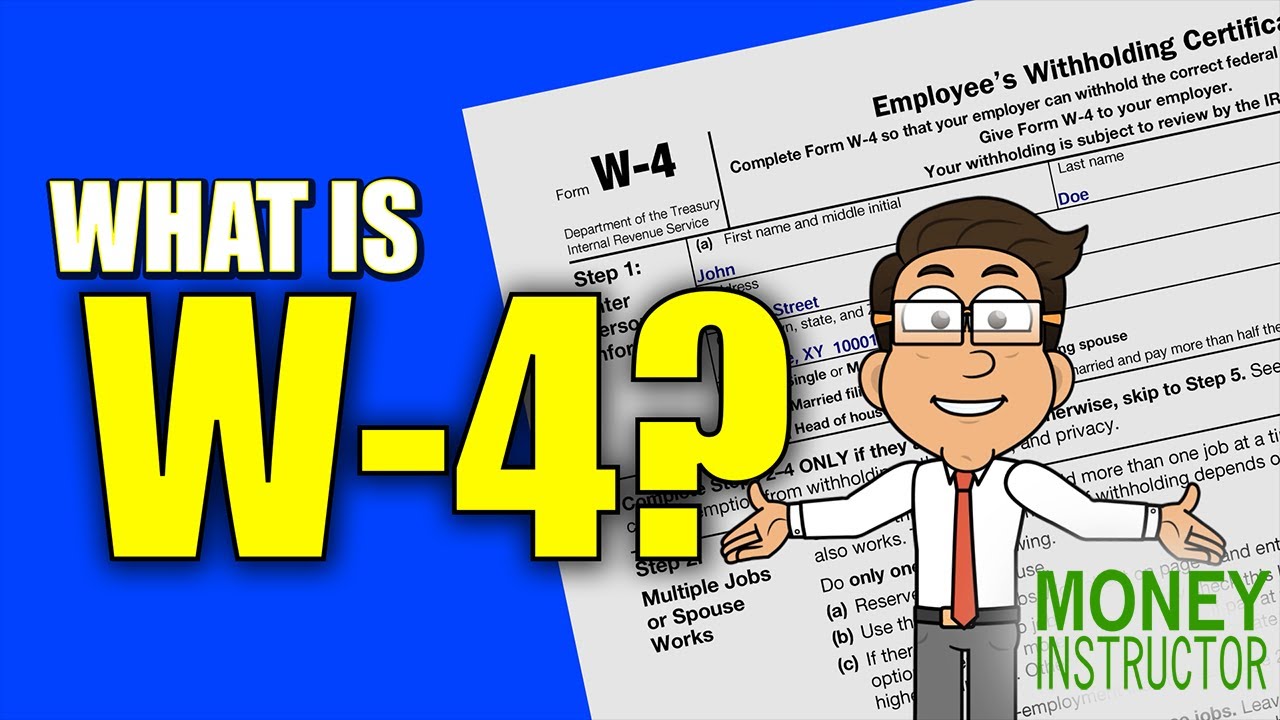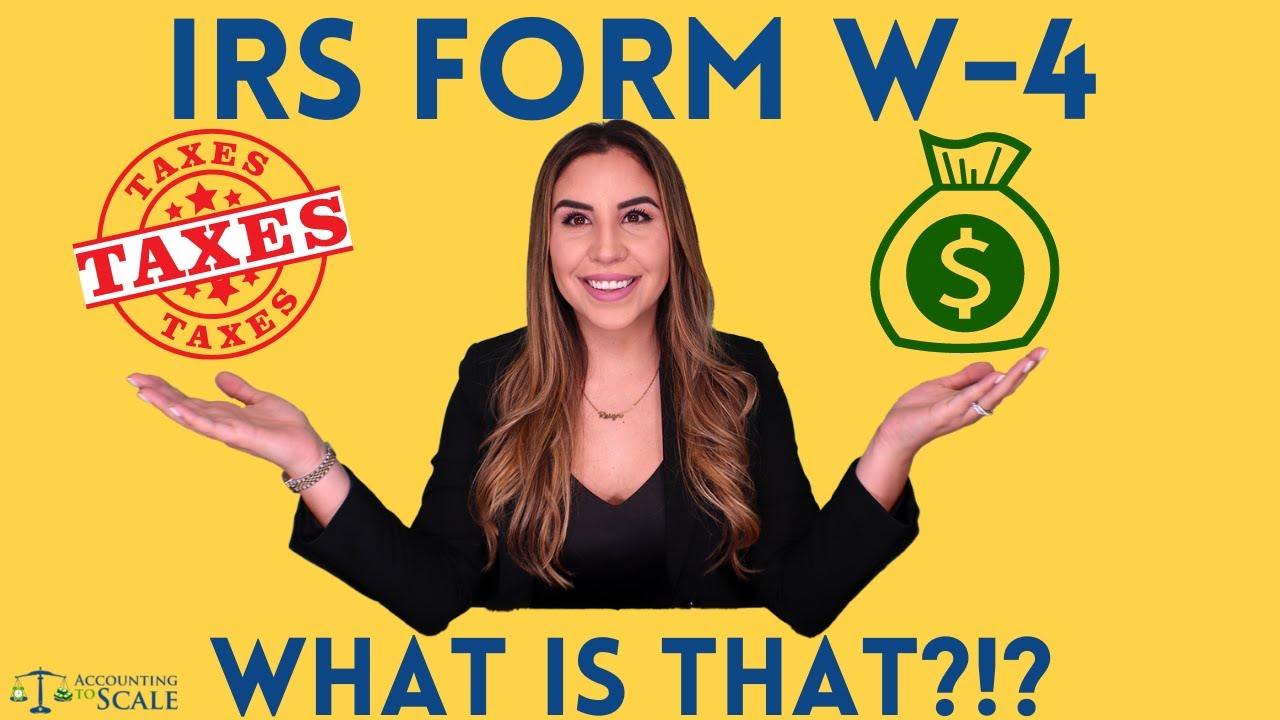When you’re starting a new job or making adjustments to your tax information, one of the most important tasks is filling out the W-4 form. Often overlooked, this piece of paper—officially known as the Employee’s Withholding Certificate—serves a vital role in determining how much federal income tax is withheld from your paycheck. Understanding what is a W4 and how it impacts your financial picture can greatly affect your take-home pay and, ultimately, your tax situation at the end of the year. Let’s dive deeper.
The W-4 allows you to communicate your tax situation to your employer. By indicating factors such as your filing status, dependents, and other adjustments, you’re setting the stage for how your income gets taxed. Each choice you make on this form can directly influence the amount of money that hits your bank account every paycheck. In short, it’s a key financial tool that affects your cash flow and tax liability simultaneously.
Getting the W-4 right means you’re not overpaying taxes throughout the year or scrambling to pay up when tax season rolls around. You can think of the W-4 as your personalized highway sign; it tells your employer how much tax to withhold so you don’t end up driving into financial trouble. Understanding your withholding is just as vital as understanding mortgage rates when you’re about to take the plunge on a home.

7 Key Elements of a W4 That Impact Your Tax Withholding
Filling out your W-4 isn’t as simple as just scribbling your name and calling it a day. Here are seven essential elements that can significantly impact how much tax is withheld from your paycheck:

What Is a CPA and Why You Might Need One for Your W4
A Certified Public Accountant (CPA) can be invaluable when it comes to understanding your W-4. If tax jargon feels like a foreign language, don’t sweat it. A CPA can help simplify the process. They can guide you through filling out your W-4 and highlight potential deductions and credits you might initially overlook.
Choosing to work with a CPA means tapping into customized advice tailored just for you. They focus on your financial situation, helping you avoid both overpayment and underpayment penalties. With their help, you’ll feel confident that your form aligns with your tax goals.
So, why fret over every line of that W-4 form when an expert can guide you? Letting a CPA weigh in can turn an otherwise confusing endeavor into a streamlined process that fosters your overall financial wellness.

Tax Planning Tips: What is an NFT and What’s Its Relationship to Your W4?
As you fill out your W-4, be aware of diverse income streams that may affect your tax situation. One term popping up in financial circles is NFT—Non-Fungible Token. If you’ve ventured into trading NFTs and gained extra income, be sure to report this when you fill out your W-4.
The money you make from selling NFTs should be considered when calculating how much to withhold. Ignoring these transactions could result in owing more at tax time than you anticipated. Keeping comprehensive records of any NFT sales might just save you a headache later.
Tax planning isn’t only about job income; it’s about anticipating all income streams in today’s digital economy. Embracing this mindset gives you a well-rounded approach to your overall financial picture.

Financial Implications of Using a CPN
The topic of a Credit Privacy Number (CPN) is as convoluted as it is controversial. Some people consider separating their credit from their Social Security number for various reasons, but this approach can complicate tax situations. Confusion can easily arise when completing your W-4 if you don’t handle a CPN correctly.
Opting to use a CPN can lead to unintended legal consequences if mishandled. Therefore, laying out your options with a tax professional is necessary to ensure you make informed choices. You don’t want to find yourself in hot water due to critical tax miscalculations.
If you’re ever in doubt, consulting a tax advisor puts the odds in your favor. You’ll want to ensure your W-4 reflects your exact circumstances, and identifying the nuances surrounding a CPN is just one element of that.

An Innovative Look at CV: What is a CV and Its Relevance to Your Workspace
Your Curriculum Vitae (CV) holds power beyond landing a job; it influences your W-4 as well. As employers increasingly focus on candidates’ experience detailed in a CV, this can significantly impact the salary and benefits package they offer. A more substantial salary can directly alter how much tax you need to withhold.
If you secure a dream job thanks to a killer CV, remember to revisit your W-4. Your new salary means adjustments are in order. This paperwork ensures your withholding aligns with your newfound financial status.
By staying proactive with your W-4 in light of your professional milestones, you’re setting yourself up for long-term financial success. Monitoring changes ensures you’re not over or under withhold as your career advances.
Understanding what is a W4 and how it interacts with various financial factors is crucial for informed tax planning. From selecting your filing status to walking through the nuances of tax-related income like NFTs, every detail counts. Make your W-4 work to your advantage—take control of your tax withholding, and pave the way for a healthy financial future. And as you mold your financial journey, remember to check back with resources like Mortgage Rater to stay equipped with the latest in managing your personal finances, tax planning, and more.
What is a W4?
Understanding what is a W4 is essential for anyone earning an income and trying to manage their taxes effectively. The W-4 form tells your employer how much federal income tax to withhold from your paycheck. Interestingly, the first W-4 was introduced in 1987 alongside the IRS’s move towards a more simplified withholding method. This shift aimed to make tax calculations easier, similar to how no 6 anime streamlines storytelling for its fans by effectively engaging audiences.
Fun W4 Facts
Here’s a quirky tidbit: the W-4 has gone through several revisions since its introduction. Each revision is designed to sync with changing tax laws, just like how trends in shows like Ncis Los angeles keep fans on their toes. Did you know? While the W-4 adjusts your withholding, another important form, the W-2, reflects your income and tax withheld at the year’s end. If you’re curious about the differences, check out this guide on What Is a W2.
Another fascinating aspect of what is a W4 lies in how it directly influences your budget. The more accurate your withholding, the more money you keep in your pocket throughout the year, which could be spent on fun activities like participating in Games That pay real money. Plus, if you happen to overpay, you’ll get a nice refund come tax season. But then again, make sure you’re not feeling like you’ve hit a wall with unexpected surprises, much like discovering battery acid in a science project. Research and adjustments can often make all the difference!
Importance of Adjusting Your W4
Knowing what is a W4 can pave the way for effective financial planning. It’s like playing the DC Pick 5 lottery – you want to maximize your chances of success! Accurate withholding can be the key to a smoother financial year, allowing you to plan ahead. And if you’re ever in a jam and need to figure out how to come up with extra cash quickly, knowing How To make quick money can help ease stress when tax time rolls around. Lastly, for anyone launching new endeavors, understanding what an EIN is can also be beneficial for your tax-related tasks; if you’re interested, learn more about What Is an Ein number.
So, next time you fill out your W-4, remember that it’s more than just a form – it’s a dynamic tool that plays a huge role in your financial landscape. The steps you take today can lead to rewarding payoffs tomorrow, whether that means spending your refund on a dream vacation or merely catching up on bills. Knowledge is wealth, so learn more about managing your tax withholding wisely!



